
BM-004
Trang 1 / 6
TRƯỜNG ĐẠI HỌC VĂN LANG
ĐƠN VỊ: KHOA NGOẠI NGỮ
ĐỀ THI, ĐÁP ÁN/RUBRIC VÀ THANG ĐIỂM
THI KẾT THÚC HỌC PHẦN
Học kỳ 3, năm học 2023-2024
I. Thông tin chung
Tên học phần:
ĐỌC HIỂU THƯƠNG MẠI
READING IN GENERAL BUSINESS
Mã học phần:
DNN0091
Số tín chỉ:
03
Mã nhóm lớp học phần:
233_DNN0091_01
Hình thức thi: Trắc nghiệm + Tự luận
Thời gian làm bài:
75
phút
Thí sinh được tham khảo tài liệu:
☐ Có
☒ Không
II. Các yêu cầu của đề thi nhằm đáp ứng CLO
Ký
hiệu
CLO
Nội dung CLO
Hình
thức
đánh giá
Trọng số
CLO trong
thành phần
đánh giá (%)
Câu
hỏi
thi số
Điểm số
tối đa
Lấy dữ
liệu đo
lường
mức đạt
PLO/PI
(1)
(2)
(3)
(4)
(5)
(6)
(7)
CLO 1
Vận dụng kiến thức
các thuật ngữ thuộc
các lĩnh vực tiếng
Anh thương mại để
xử lý các bài đọc
thương mại khác
nhau.
Trắc
nghiệm
30%
1
2đ
PI 4.1
PI 4.3
PI 6.3
CLO 2
Vận dụng kiến thức
ngôn ngữ thuộc các
lĩnh vực tiếng Anh
thương mại để giải
quyết các tình huống
cụ thể (case study)
trong các lĩnh vực
thương mại.
Trắc
nghiệm
+ Tự
luận
30%
1, 2,3
Câu 1: 2đ
Câu 2: 5đ
Câu 3: 3đ
PI 4.1
PI 4.3
PI 6.3
CLO 3
Giải quyết hiệu quả
các tình huống (case
study) thuộc các lĩnh
Tự luận
40%
2,3
Câu 2: 5đ
Câu 3: 3đ
PI 4.1
PI 4.3
PI 6.3

BM-004
Trang 2 / 6
vực kinh tế, thương
mại
III. Nội dung câu hỏi thi
Câu hỏi 1: (2 điểm)
Match the 10 business terms with their appropriate definitions (0.2 marks each)
1. Scarcity
2. Opportunity cost
3. Capital goods
4. Mixed economy
5. Entrepreneur
6. Revenue
7. E-commerce
8. Shareholder
9. Flow production
10. Franchise
a. an economy where the resources are owned
and controlled by both the private and public
sectors
b. an individual who has an idea for a business
takes the financial risk of starting and
managing a new business
c. is where large quantities of a product are
produced in a continuous process.
d. a person or organization who owns shares in
a limited company
e. there are not enough goods and services to
meet the wants of the population
f. the amount a business earns from the sale of
its products
g. a business system where entrepreneurs buy
the right to use the name, logo and product of
an existing business
h. the benefit that could have been gained from
an alternative use of the same resource
i. a physical goods, such as machinery and
delievery vehicles, used by other businesses to
help produce other goods and services
j. is the online buying and selling of goods and
services using computer systems linked to the
internet and apps on mobile (cell) phones
Câu hỏi 2: (5 điểm)
READING COMPREHENSION FOR BUSINESS ENGLISH
ELEVATING BUSINESS ETHICS: NAVIGATING THE MORAL COMPASS OF
COMMERCE
In the intricate web of commerce, where transactions occur at the intersection of profit and
principle, business ethics emerges as the guiding force, steering organizations toward virtuous

BM-004
Trang 3 / 6
conduct and sustainable success. It encapsulates a set of moral principles, values, and
standards that govern the behavior of individuals and institutions within the business realm.
In this expansive exploration of business ethics, we delve into its profound significance, its
multifaceted impact on stakeholders, and the strategies businesses can employ to cultivate a
culture of integrity in today's complex and interconnected world of commerce.
Unveiling the Heart of Business Ethics
At its essence, business ethics embodies the principles of honesty, integrity, fairness, and
responsibility. It is about conducting business with a commitment to moral values and ethical
standards, even in the face of challenges or temptations. Business ethics extends beyond legal
compliance—it represents a higher standard of conduct that reflects an organization's
commitment to doing what is right, just, and honorable in all aspects of its operations.
The Strategic Imperative of Business Ethics
Business ethics is not merely a moral imperative; it is also a strategic imperative that
influences organizational performance, reputation, and long-term viability. Consider the
following ways in which business ethics shapes business outcomes:
Enhanced Reputation and Trust: Ethical behavior builds trust and credibility among
stakeholders, including customers, investors, employees, and the wider community. A
reputation for integrity can differentiate a business in the marketplace, foster customer loyalty,
and attract top talent.
Stakeholder Satisfaction and Loyalty: Prioritizing ethical conduct fosters positive
relationships with stakeholders, leading to greater satisfaction, loyalty, and advocacy.
Employees are more engaged and committed when they work for an organization that upholds
ethical values and treats them with dignity and respect.
Risk Mitigation and Legal Compliance: Adhering to ethical standards helps businesses
mitigate legal and regulatory risks, reducing the likelihood of litigation, fines, and reputational
damage. By proactively addressing ethical issues and fostering a culture of compliance,
organizations can safeguard their reputation and minimize exposure to legal liabilities.
Long-Term Value Creation: Ethical business practices contribute to long-term value creation
by promoting sustainability, innovation, and stakeholder engagement. Businesses that
prioritize environmental stewardship, social responsibility, and ethical leadership are better
positioned to adapt to evolving market trends, mitigate risks, and capitalize on opportunities
for growth.
Key Principles of Business Ethics
To foster a culture of integrity within organizations, it is essential to uphold the following
core principles of business ethics:
Integrity: Act with honesty, transparency, and consistency in all business dealings. Uphold
high ethical standards and adhere to the principles of fairness, truthfulness, and accountability
in every decision and action.
Respect: Treat all stakeholders with dignity, respect, and fairness, regardless of differences
in background, beliefs, or status. Embrace diversity, equity, and inclusion as fundamental
principles that enrich organizational culture and drive innovation and creativity.
Responsibility: Accept accountability for the consequences of decisions and actions. Consider
the impact of business activities on stakeholders, society, and the environment, and strive to
minimize negative externalities while maximizing positive contributions to the common good.

BM-004
Trang 4 / 6
Trustworthiness: Build trust through reliability, competence, and ethical behavior. Honor
commitments, fulfill obligations, and communicate openly and honestly with stakeholders,
demonstrating a commitment to transparency and integrity in all interactions.
Compliance: Adhere to legal and regulatory requirements, as well as industry standards and
best practices. Implement robust compliance programs, ethical guidelines, and internal
controls to ensure adherence to ethical standards and mitigate the risk of misconduct or
noncompliance.
Strategies for Promoting Ethical Behavior
To embed ethical values into the fabric of an organization and foster a culture of integrity,
leaders can implement the following strategies:
Lead by Example: Demonstrate ethical leadership by modeling integrity, fairness, and ethical
decision-making in all aspects of business operations. Set clear expectations for ethical
behavior and hold individuals accountable for upholding ethical standards and values.
Provide Training and Education: Offer comprehensive training programs and educational
resources to raise awareness of ethical issues and equip employees with the knowledge, skills,
and tools to identify and address ethical dilemmas effectively.
Foster Open Communication: Create a culture of transparency, trust, and open
communication where employees feel empowered to raise ethical concerns, ask questions,
and seek guidance without fear of retaliation or reprisal.
Establish Ethical Codes and Policies: Develop and communicate clear codes of conduct,
ethical policies, and organizational values that outline expected standards of behavior and
provide guidance on ethical decision-making in various contexts and situations.
Reward Ethical Behavior: Recognize and reward employees who demonstrate exemplary
ethical behavior and contribute to a culture of integrity and accountability. Incentivize ethical
conduct through performance evaluations, promotions, bonuses, and other forms of
recognition and reinforcement.
Embracing Innovation and Continuous Improvement
As the business landscape evolves and new challenges emerge, organizations must remain
vigilant and proactive in their efforts to promote ethical behavior and uphold integrity. By
embracing innovation, embracing change, and continuously improving ethical practices and
processes, businesses can adapt to evolving market dynamics, anticipate emerging risks, and
seize opportunities for growth and advancement.
In the complex and interconnected world of business, where decisions have far-reaching
consequences and stakeholders demand accountability and transparency, business ethics
serves as the moral compass that guides organizations toward principled conduct and
responsible stewardship. By embracing ethical principles, fostering a culture of integrity, and
prioritizing the well-being of all stakeholders, businesses can create value for society while
achieving their strategic objectives and securing a prosperous and sustainable future for
generations to come.
Based on the text above, answer the following questions: (1 point each question)
1. In your opinion, why is business ethics important?
2. How can leaders effectively demonstrate ethical leadership within organizations?

BM-004
Trang 5 / 6
3. What are some practical steps that organizations can take to foster a culture of integrity
and ethical behavior among their employees?
4. What can businesses do to strike a balance between economic objectives and ethical
considerations?
5. What role does innovation play in continuously improving ethical practices within
organizations?
Câu 3: (03 điểm)
CASE STUDY (1 point each question)
Sasha rents a market stall selling jewellery. She makes most of the jewellery herself but she also buys
in items from large manufacturers. She hires a sales assistant who receives a small payment for each
item she sells.
Sasha wants to expand her business and she has found out that there is an empty shop near her home.
The fixed costs of the shop are three times greater than those of the market stall.
1. Identify two variable costs in this case.
2. Identify two fixed costs that Sasha has.
3. Outline two ways in which Sasha could reduce the break-even level of sales from her market stall.
ĐÁP ÁP VÀ THANG ĐIỂM
Phần câu hỏi
Nội dung đáp án
Thang điểm
Ghi chú
I. Tự luận
Câu 1
2.0
Question 1
e
0.2
Question 2
h
0.2
Question 3
i
0.2
Question 4
a
0.2
Question 5
b
0.2
Question 6
f
0.2
Question 7
j
0.2
Question 8
d
0.2
Question 9
c
0.2
Question 10
g
0.2
Câu 2
Theo rubric chấm thi
5.0
Câu 3
Theo rubric chấm thi
3.0
Điểm tổng
10.0
RUBRIC ĐÁNH GIÁ PHẦN TỰ LUẬN
Tiêu
chí
Trọng
số (%)
Tốt
(8.5-10 điểm)
Khá
(7-8.4 điểm)
Trung bình
(5.5-6.9 điểm)
Yếu/Kém
(4-5.4 điểm)





![Đề cương chi tiết Tiếng Anh thương mại 2 (Business English 2) - Trường ĐH Đà Lạt [Mới nhất]](https://cdn.tailieu.vn/images/document/thumbnail/2025/20250212/tuetuebinhan666/135x160/7211739332500.jpg)
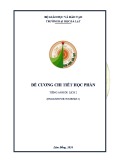
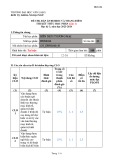
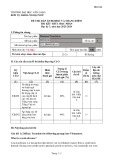
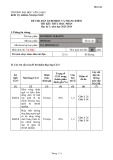
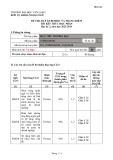
![Đề cương ôn tập Tiếng Anh du lịch (English for Tourism) [mới nhất]](https://cdn.tailieu.vn/images/document/thumbnail/2025/20250728/kimphuong1001/135x160/55271753673317.jpg)





